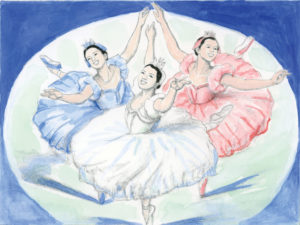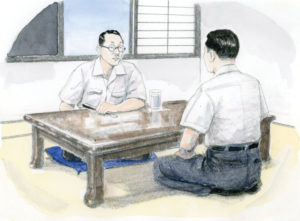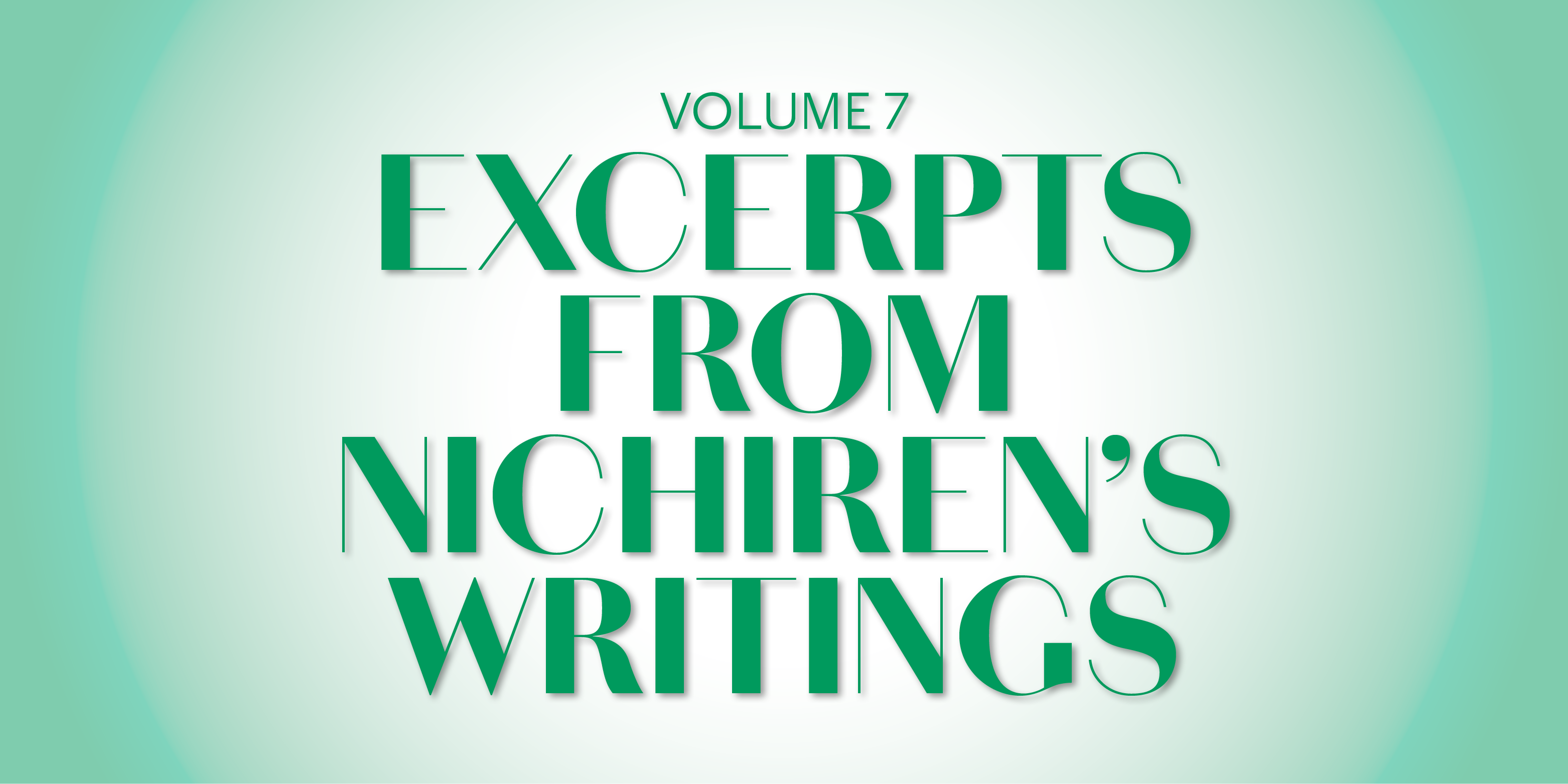This installment, published in the April 17, 2019, issue of the Seikyo Shimbun, focuses on passages from Nichiren Daishonin’s writings that SGI President Ikeda discussed in volume 7 of The New Human Revolution.
Passage 1
“Even if you are not the Venerable Mahakashyapa, you should all perform a dance. Even if you are not Shariputra, you should leap up and dance. When Bodhisattva Superior Practices emerged from the earth, did he not emerge dancing?”(“Great Evil and Great Good,” The Writings of Nichiren Daishonin, vol. 1, p. 1119)
A Cultural Movement Rooted in the Lives of the People

Illustration courtesy of Seikyo Press.
In autumn of 1962, the Arts Department—the flagbearers of culture—was established. As music and culture festivals were being held, Shin’ichi Yamamoto affirms the relationship between kosen-rufu and cultural movements.
When Shakyamuni’s most venerable disciples Mahakashyapa and Shariputra (who was foremost in wisdom) heard Shakyamuni preach the Lotus Sutra, the supreme teaching for attaining enlightenment, they leapt to their feet, their hearts dancing with joy.
And when, during his preaching, Shakyamuni called forth the great legions of bodhisattvas from the earth, entrusting them with the mission of propagating the Lotus Sutra after his death, in the Latter Day of the Law, Bodhisattva Superior Practices, their leader, sprang forth joyfully.
They leaped exuberantly to their feet from the tremendous joy of learning the supreme truth of the universe and deciding to spread that truth, to bring happiness to all living things. In such a deep, spontaneous expression of joy, which arises from the essence of one’s being, we find the flowering of art.
■ ■ ■
Shin’ichi viewed kosen-rufu as a cultural movement rooted in the lives of the people. Once, when asked by some young people what conditions would result from the spread of Nichiren Daishonin’s teachings, he said, “Just to give a cultural example, we might describe it as a time when ordinary, little old Japanese women will discuss Beethoven and Bach with ease in their daily conversations.” Culture and art take on their true meaning when they are known and loved by the people. Without the participation and appreciation of the people, culture and art are empty, meaningless. (The New Human Revolution, vol. 7, pp. 36–37)
Passage 2
“In this age as well, it is not one’s allies but one’s powerful enemies who assist one’s progress.” (“The Actions of the Votary of the Lotus Sutra,” WND-1, 770)
The Struggle to Defend Human Rights

Illustration courtesy of Seikyo Press.
On the evening of March 3, 1963, Shin’ichi pondered the insidious nature of authority and recalled his mentor’s words amid the Osaka Incident.
“We would be betraying Nichiren Daishonin’s spirit to ‘secure the peace of the land through establishing the correct teaching’ if we ignored the suffering in society and closed ourselves off in the religious world, content just to sit in peace and quiet, chanting daimoku [Nam-myoho-renge-kyo]. The practice of Buddhism lies in the struggle to eliminate misery and suffering from the world, to defend human rights and human dignity, and to build a peaceful society.
“In our bold efforts to do so, it is only natural that we will be subject to persecution and attack. But if we let that intimidate us, we will not fulfill our true mission as Buddhists. Furthermore, the only way for us to change our karma and attain Buddhahood in this lifetime is by triumphing over the persecution and obstacles we encounter in the course of working for the Law …
“If we win in the struggle against malicious people and evil authorities bent on destroying kosen-rufu, we attain Buddhahood. That is why the Daishonin says that our great enemies actually do more for us than our friends.
“Those who fight with courage against harsh persecution become strong. They become lions.”
■ ■ ■
“Whether we can achieve a life of eternal victory, whether we can attain Buddhahood in this lifetime, is determined by how we respond when the Soka Gakkai is faced with persecution. Do we simply stand by, telling ourselves it doesn’t concern us directly? Or do we jump into the fray and fight courageously for what’s right?” (NHR-7, 328–29)
The Age of “Global Citizenship”
In the “At the Helm” chapter of volume 7 of The New Human Revolution, Shin’ichi Yamamoto realizes that the time has come to awaken humanity to the grand ideal of global citizenship and to realizing lasting peace.
At the time, Cold War tensions were mounting between the Eastern and Western blocs, culminating in events such as the Cuban Missile Crisis. Linking human hearts in a bond transcending differences in ideology, nationality and ethnicity would be the most difficult undertaking. But the Soka Gakkai, with Shin’ichi Yamamoto at the helm, was embarking on a “momentous experiment in the history of humankind” (NHR-7, 354).
When Josei Toda called for “global citizenship,” people were cynical, claiming that such an idea was unrealistic and a mere fantasy. And although the Cold War ended, different forms of division and hostility persisted throughout the world. Today, thoughtful individuals in various fields of endeavor are honing in on this concept—borne of Mr. Toda’s wisdom and foresight—as the philosophical foundation on which to construct a new age of harmony and coexistence.
We live in a time in which the spirit of global citizenship is just beginning to illuminate the world. It is none other than President Ikeda who has opened the doors to this new age by continuing to uphold and spread his mentor’s vision. It is the mission and responsibility of disciples to continue developing and building upon what the mentor has created.
You are reading {{ meterCount }} of {{ meterMax }} free premium articles

